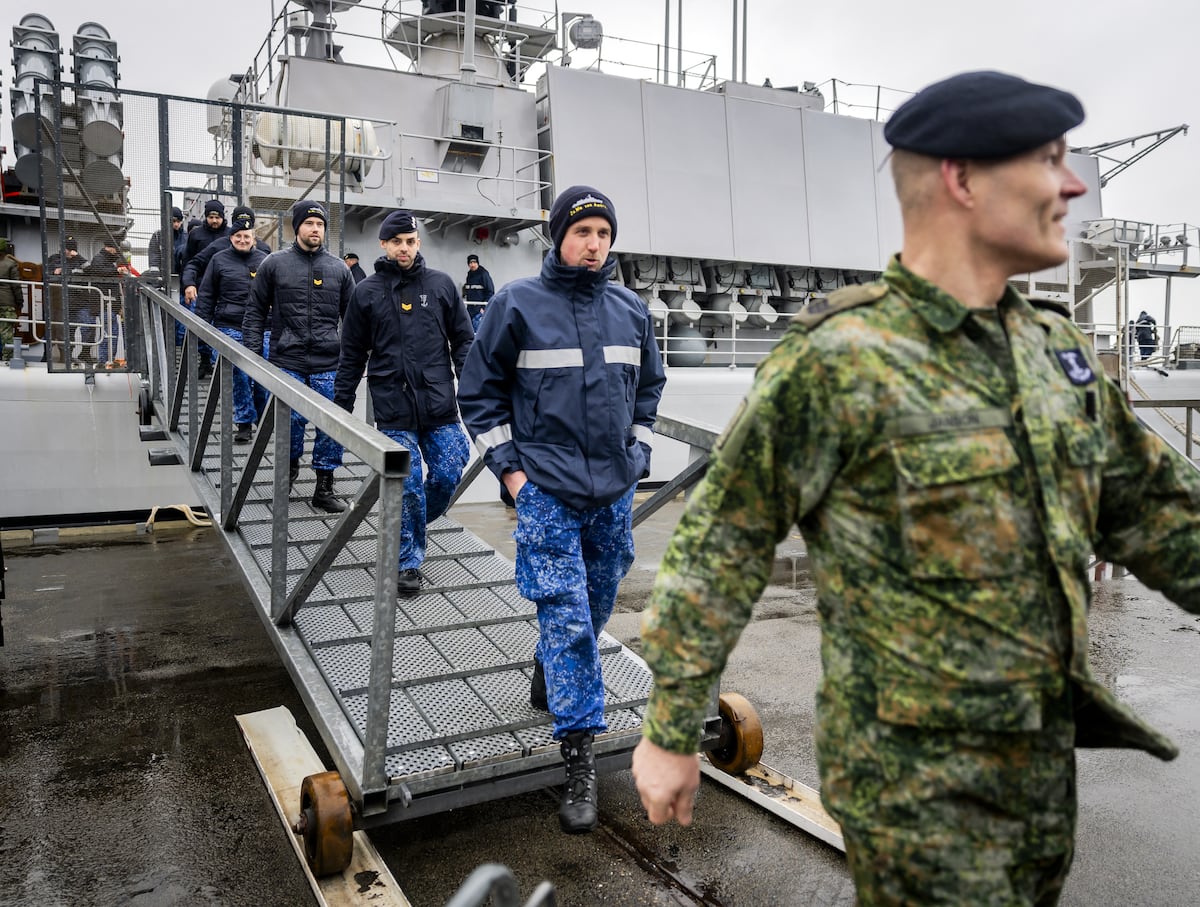PARIS — The Netherlands plans to buy a torpedo-killing torpedo as early as 2029, replace the armed forces’ standard assault rifle starting this decade and equip its heavy infantry brigade with tracked armored general-purpose vehicles, as part of 17 equipment projects for the coming years.
Total spending on the planned projects will be at least €1.45 billion (US$1.65 billion), based on the lower end of the budget range for each project, according to a so-called “A letter” from the Dutch Ministry of Defense sent to parliament on Wednesday outlining equipment requirements.
“It’s essential that the Ministry of Defense has the necessary defense equipment at its disposal in good time to increase our deterrence and be a reliable NATO ally,” State Secretary of Defence Gijs Tuinman wrote. “With this omnibus A letter, the Ministry of Defense is taking the next step toward greater flexibility and less internal bureaucracy in the procurement process.”
The Netherlands lifted its 2025 defense budget to €22 billion, after spending €21.4 billion last year. The country is in the process of renewing its fleet of air-defense frigates, anti-submarine warfare frigates and submarines, and on land is beefing up its 43 Mechanized Brigade into a heavy infantry brigade with a full-fledged tank battalion and mobile air-defense systems.
The Dutch plan to equip the future frigates, submarines and new amphibious transport vessels with a hard-kill system to defend against unmanned underwater vehicles such as drones and torpedoes. The first platform to be fitted with the anti-torpedo torpedo (ATT) system will be the anti-submarine warfare frigates, according to Tuinman.
Development of the anti-torpedo weapon from a demonstration model to a production-ready design will continue within the European Union’s Permanent Structured Cooperation through to 2028, according to the Dutch MoD. Subsequently, the Netherlands expects to acquire a “qualified ATT” starting in 2029, when the first new Dutch ASW frigate is scheduled to become operational.
The investment for the anti-torpedo torpedo is €250 million to €1 billion for the 2025-2039 period, the ministry said. Potential international military cooperation through PESCO will reduce the technical development and financial risks, according to Tuinman.
RELATED
Other Navy investment projects include a replacement for the Mark 48 torpedoes for the new Orka-class submarines to be built by Naval Group, with delivery of the new torpedoes planned in the early 2030s. The Netherlands also plans to invest in unmanned aerial vehicles and unmanned surface vessels for maritime intelligence, surveillance and reconnaissance and to contribute to anti-submarine warfare. Both projects are in the €50 million to €250 million range.
For the land forces, the Netherlands plans to buy an estimated 100 to 150 tracked armored vehicles for use by the heavy infantry brigade in roles including transport, command, ambulance, engineering and troop transport, for between €250 million and €1 billion.
The MoD plans to buy the tracked vehicles through a negotiated procedure without tender from a single source, buying systems that are already known and have been acquired previously, Tuinman said. “This ensures that contracting can be done quickly, which benefits delivery time.”
While Tuinman didn’t provide details on the model the Dutch plan to buy, the 43 Mechanized Brigade operates the CV90 infantry combat vehicle from BAE Systems Hägglunds, alongside Leopard 2 main battle tanks. The CV90 exists in an armored-personnel carrier version that is the base for other non-turreted variants.
Sweden, Finland, Norway and Lithuania are preparing a joint purchase of the CV90, the Swedish government said earlier this week.
The Dutch list of projects also includes replacing the armed forces’ Colt C7 standard assault rife and C8 carbines, with a budget of €250 million to €1 billion for the 2027-2041 period. The existing rifles have been modernized since 2009 and will reach the end of their technical lifespan in 2030, and the ministry targets the first deliveries of the new arms before the end of the decade.
The MoD plans to buy multiple variants of the same weapon from a single supplier, and is looking for a possible purchase in cooperation with partner countries to increase interoperability. The Netherlands said several partners and allies either use similar weapons or are planning to acquire them in the short term.
The Netherlands will also buy around 200 multi-barrel machine guns that will equip helicopters and ships, for between €50 million and €250 million. The speed of engagements has increased, and the MoD said it’s looking for a weapon with a higher rate of fire than the current MAG 7.62 mm and Browning .50 machine guns.
Technical improvements on a multi-barrel machine gun make it less likely to malfunction than current weapons, and the improved combat capabilities increase the survivability and operational availability of platforms including naval vessels and helicopters, the ministry said.
The ministry said the Dutch F-35 jets need a tactical armament that can be deployed against well-defended targets, with high survivability to avoid anti-munition weapon systems, and the ministry has budgeted €50 million to €250 million from 2027 to 2032 to acquire such a weapon.
The current weapons for tactical deployment equipping the Dutch F-35 fleet are precision-guided and short-range, free-fall munitions with low survivability due to lack of speed or because of high radar reflectivity. They are limited in their deployment due to vulnerability to weather conditions, camouflage, deception and jamming, the ministry said.
The Netherlands has changed its defense procurement to cut red tape and accelerate the process, doubling the threshold that requires notification to parliament to €50 million and lifting the investment amount that needs parliamentary approval to €250 million from €100 million.
“Since the Russian invasion of Ukraine in February 2022, Defense has taken new measures to increase agility, speed up processes and reduce internal bureaucracy,” Tuinman said.
Rudy Ruitenberg is a Europe correspondent for Defense News. He started his career at Bloomberg News and has experience reporting on technology, commodity markets and politics.
Read the full article here








Leave a Reply